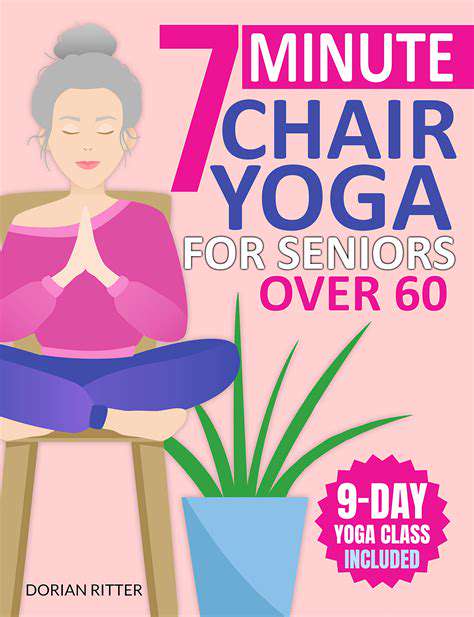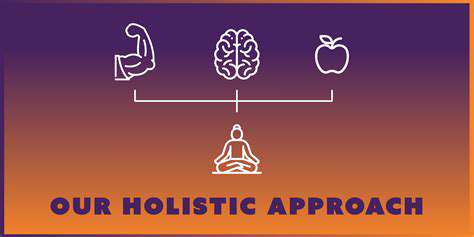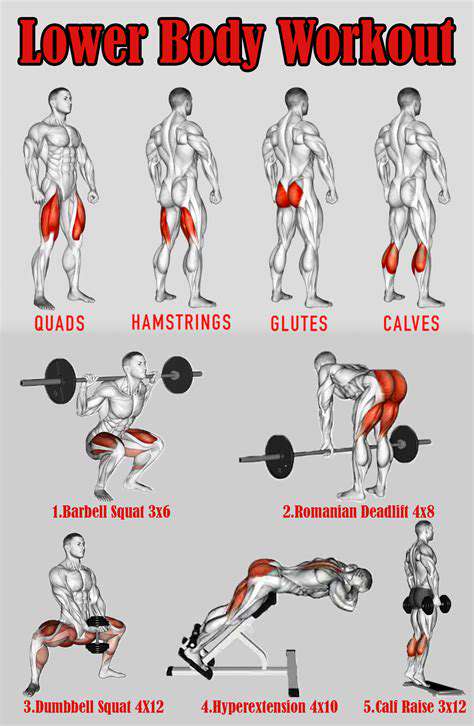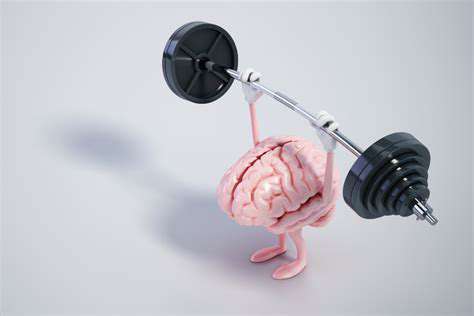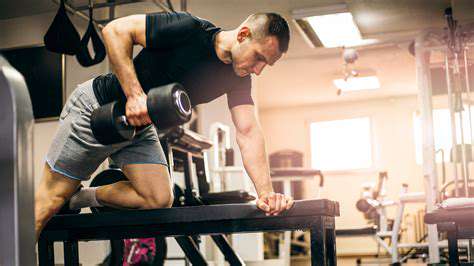Gentle Indoor Exercises for Seniors 80+ to Prevent Falls
Importance of Movement
Maintaining mobility and flexibility is crucial for seniors aged 80 and beyond. Gentle exercises, tailored to individual needs and limitations, can significantly improve balance, coordination, and overall well-being. Regular movement helps to prevent muscle atrophy, a common issue in aging, which can lead to decreased strength and increased risk of falls. This, in turn, can lead to a more independent and fulfilling lifestyle for seniors in their 80s and beyond. By incorporating gentle activity into their daily routine, individuals can preserve their independence and quality of life.
Tailoring Exercises to Individual Needs
Recognizing that every senior is unique is paramount. Exercises for seniors 80+ should be adapted to accommodate any existing health conditions, physical limitations, and personal preferences. This might involve modifications to intensity, duration, or types of exercises. Consulting with a healthcare professional or a certified senior fitness instructor is essential to ensure the exercises are safe and effective for the individual's specific needs and capabilities. This personalized approach is key to creating a safe and successful exercise program.
Benefits Beyond Physical Strength
The benefits of gentle exercises for seniors extend beyond physical strength and stamina. They can positively impact mental well-being. Engaging in regular physical activity can reduce stress, improve mood, and combat feelings of isolation and loneliness, common concerns among seniors. It can also help improve sleep quality, a crucial aspect of overall health and well-being. Gentle exercises can also boost cognitive function and memory, making a positive impact on mental sharpness.
Types of Gentle Exercises
A wide range of gentle exercises can be incorporated into a senior's routine. These include chair exercises, such as stretching, arm and leg movements, and gentle walking in place. Simple balance exercises, like standing on one leg or heel-toe walking, can be incredibly beneficial for maintaining stability. Gentle yoga or tai chi poses can improve flexibility, balance, and mindfulness. Swimming, if accessible, is also a low-impact exercise that can be very beneficial for seniors.
Safety Precautions and Considerations
Safety is paramount when designing an exercise program for seniors. Always start slowly and gradually increase the intensity and duration of exercises over time. Listen to your body and stop if you experience any pain. Appropriate footwear and clothing, as well as a supportive environment, are essential. Consider the surrounding environment when exercising, ensuring the area is free of obstacles and hazards to prevent falls. Regular check-ins with a healthcare professional are crucial to monitor progress, address any concerns, and ensure the safety and efficacy of the exercise program.
Choosing the Right Exercises: Focusing on Balance and Strength

Choosing Effective Exercises for Strength Training
Selecting the right exercises for strength training is crucial for achieving your fitness goals. Understanding the different types of exercises, such as compound movements that work multiple muscle groups simultaneously, and isolation exercises that target specific muscles, is essential for a well-rounded workout plan. Prioritizing compound exercises like squats, deadlifts, and presses is often recommended for maximizing muscle growth and overall strength gains. These exercises also tend to engage more stabilizer muscles, leading to better functional fitness.
Consider incorporating exercises that work various muscle groups to promote balanced strength development. For example, exercises that target the upper body, such as bench presses and rows, should be balanced with exercises that target the lower body, such as squats and lunges. This approach helps prevent imbalances and promotes overall physical well-being. Consistency in performing these exercises, coupled with proper form and technique, is key to seeing positive results.
Considering Your Fitness Level and Goals
Your current fitness level and specific goals should heavily influence your exercise selection. A beginner should start with simpler exercises and gradually progress to more complex ones as strength and endurance improve. This approach minimizes the risk of injury and allows for a safe and effective workout.
Different fitness goals will require different exercise selection. Someone focused on building muscle mass might prioritize compound exercises over endurance-focused activities. Those aiming for improved cardiovascular health would incorporate endurance exercises into their routines. Tailoring your workout to align with your specific objectives ensures that you're making the most of your efforts.
Exercise Variety and Progression
Maintaining exercise variety is important to prevent plateaus in strength gains. Introducing new exercises that target different muscle groups or using different variations of existing exercises can keep your body challenged and promote continued progress. This strategy ensures that your muscles are constantly being stimulated in new ways, promoting optimal adaptation.
Progressive overload is also a critical aspect of exercise selection. As you get stronger, you need to increase the intensity or volume of your workouts to continue challenging your muscles. This could involve increasing the weight lifted, the number of repetitions, or the sets performed. Progressive overload, when done safely and strategically, is essential for continuous improvement and achieving your fitness goals.
Proper Form and Technique
Prioritizing proper form and technique is paramount when choosing exercises. Incorrect form can lead to injuries and hinder progress. Learning proper form is essential for maximizing the effectiveness of exercises and minimizing the risk of injury. Thorough understanding of proper form and technique is crucial to avoid potential harm and to yield the best possible results.
Seeking guidance from qualified professionals, such as trainers or physical therapists, can be invaluable in learning proper form. They can provide personalized instruction and ensure that you’re performing exercises correctly. This is especially important for beginners, who may not yet have a strong grasp of proper form. Consulting a professional ensures your exercises are being performed safely and efficiently.
Safety Considerations and Precautions
Safety should always be a top priority when choosing and performing exercises. Identifying and understanding potential risks associated with certain exercises is vital. Understanding the limitations of your physical capabilities is a crucial step in choosing exercises that are appropriate for your current state of health.
Listen to your body and take rest days when needed. Rest is essential for muscle recovery and preventing injuries. This includes identifying and addressing any pain or discomfort during workouts to prevent potential long-term issues. Rest and recovery are essential components of any effective exercise program. Consulting with a healthcare professional before starting any new exercise program is essential, especially if you have any pre-existing health conditions.
Building a Routine: Gradual Progression and Consistency
Understanding the Importance of Gradual Progression
Building a consistent routine for indoor exercises is crucial for long-term health benefits, but it's equally important to understand the principle of gradual progression. Rushing into intense workouts, especially when starting a new routine, can lead to injuries and discourage you from continuing. Gradual progression involves incrementally increasing the intensity, duration, or difficulty of your exercises over time. This allows your body to adapt and build strength and endurance without putting undue stress on your muscles and joints.
Think of it like training for a marathon. You wouldn't start by running a full 26.2 miles; you'd gradually increase your distance and pace over weeks and months. This same principle applies to all indoor exercises, from yoga to strength training.
Setting Realistic Goals and Expectations
Setting realistic goals is paramount to maintaining motivation and consistency in your indoor exercise routine. Instead of aiming for unrealistic results immediately, focus on achievable milestones. For example, if your goal is to increase your daily step count, start with a modest increase each week, rather than trying to drastically change your activity levels overnight. This gradual approach fosters a sense of accomplishment and prevents feelings of frustration or overwhelm.
Be patient with yourself. Building a routine takes time and effort. Celebrate small victories along the way, recognizing that progress, no matter how small, is progress nonetheless.
Choosing Exercises That Suit Your Needs and Preferences
Selecting exercises that align with your physical capabilities, interests, and available resources is vital for long-term adherence to your indoor exercise routine. Explore various options, such as yoga, Pilates, stretching, or bodyweight exercises, and find activities you enjoy. If you're new to exercise, start with beginner-friendly routines and gradually increase the intensity and complexity as your fitness level improves.
Consider your physical limitations and consult with a healthcare professional if necessary to ensure that the exercises you choose are safe and appropriate for you.
Prioritizing Consistency over Intensity
Consistency is often more important than intensity when building an indoor exercise routine. While pushing yourself to the max can yield quick results, it's often unsustainable in the long run. Aim for regular, consistent sessions, even if they're shorter in duration. The key is to establish a routine that you can maintain over time.
Think of it like a daily habit. By making exercise a regular part of your schedule, you're more likely to stick with it and reap the numerous benefits for your physical and mental well-being.
Creating a Supportive Environment
Creating a supportive environment is crucial for maintaining consistency in your indoor exercise routine. This could involve finding a workout buddy, listening to motivating music, or setting up a dedicated workout space at home. Having a supportive environment can make a significant difference in your motivation and adherence to your exercise routine.
Surround yourself with positive influences and eliminate any potential distractions that could derail your efforts. Remember that consistency is key to long-term success.
Incorporating Rest and Recovery
Proper rest and recovery are essential components of any effective indoor exercise routine. Your body needs time to repair and rebuild after exercise. Incorporating rest days into your schedule allows your muscles to recover and prevents injuries from occurring.
Listen to your body and don't hesitate to take a break when you need it. Adequate rest and recovery are just as crucial as the exercise itself for achieving long-term fitness goals.
Tracking Progress and Adjusting as Needed
Monitoring your progress and adjusting your routine as needed is a vital aspect of building a sustainable indoor exercise routine. Tracking your workouts, noting your improvements, and making necessary modifications to your routine based on your progress will help you stay motivated and on track.
Regularly assessing your progress allows you to identify areas where you're excelling and areas where you need to focus more effort. This ongoing evaluation enables you to tailor your routine to your specific needs and ensure that you are continually improving your fitness levels in a safe and effective manner.
Important Considerations for Safety and Comfort
Prioritizing Safety
When incorporating gentle indoor exercises into your routine, safety should always be your top priority. Begin each session with a brief warm-up, such as simple arm circles and neck rotations, to prepare your muscles for the activity. Ensure your exercise space is free of clutter and tripping hazards, and use non-slip mats or floor coverings if necessary. Listen to your body; if you feel any pain, stop immediately and consult your doctor before continuing. Proper posture is crucial to prevent strain and injury, so maintain a tall, upright position throughout your exercises. Always have a sturdy chair or support readily available in case you need it.
Choosing exercises that are appropriate for your physical abilities and limitations is vital. Start with low-impact movements and gradually increase the intensity as your strength and flexibility improve. If you have any pre-existing medical conditions, consult with your doctor or a physical therapist to discuss suitable exercises and appropriate modifications. They can provide personalized guidance and ensure that the exercises you choose are safe and effective for you.
Promoting Comfort and Enjoyment
Maintaining comfort during your indoor exercises is key to ensuring a positive and enjoyable experience. Choose comfortable clothing that allows for a full range of motion, and consider wearing supportive footwear to protect your feet and ankles. A supportive environment plays a role as well. Create a comfortable and relaxing atmosphere in your exercise area, such as playing calming music or using soft lighting. This can help to reduce stress and enhance your overall enjoyment of the activity.
Taking breaks when needed is essential. If you feel tired or experience discomfort, don't hesitate to rest. Remember that consistency is more important than intensity. Aim for regular exercise sessions, even if they are short in duration, rather than pushing yourself too hard, too soon. Listen to your body's signals and adjust the exercises or rest periods as needed. Staying hydrated by drinking water throughout your workout is also important to maintain comfort and prevent dehydration.
Adapting Exercises to Individual Needs
Indoor exercises for seniors should be adaptable to meet individual needs and preferences. Consider incorporating chair exercises if standing is difficult or uncomfortable. Many effective exercises can be performed while seated, such as gentle arm movements, leg lifts, and torso rotations. If you have limited mobility in your joints, modify exercises to reduce stress on those areas. For example, you might modify a stretching exercise by holding onto a chair for support. Modifying exercises to accommodate your individual needs ensures that you can participate in activities that are safe and effective for you.
Consider incorporating activities that you enjoy, such as gentle walking, stretching, or chair yoga. This will make the exercises more enjoyable and increase the likelihood that you will stick with your routine. If you prefer to exercise with a partner or group, consider joining a senior fitness class or finding a workout buddy. This can provide motivation and social interaction, making the experience even more fulfilling.
Encouraging Participation and Making it Fun
Encouraging Active Engagement
Encouraging participation in gentle indoor exercises for seniors 80++ is crucial for maintaining physical and mental well-being. It's essential to create a supportive and enjoyable environment where seniors feel comfortable and motivated to engage. This involves fostering a positive attitude towards exercise, emphasizing the benefits of even short, regular sessions, and making it clear that there's no pressure to achieve unrealistic goals. Highlighting the social aspect of these activities, such as group classes or exercise sessions with friends, can also be a powerful motivator.
Building a sense of community and shared experience is key. Creating a safe and welcoming space, free from judgment, is paramount. Encouraging seniors to share their experiences and celebrate their progress, no matter how small, can foster a positive feedback loop that reinforces their commitment to their fitness journey.
Making Exercise Enjoyable and Accessible
To ensure that seniors find indoor exercises enjoyable and accessible, it's important to tailor the activities to their individual needs and preferences. This could involve incorporating familiar music, incorporating elements of reminiscence therapy, or using props and equipment that are easy to use and understand. The goal is to create a pleasant atmosphere where seniors feel motivated to participate rather than feeling pressured or overwhelmed.
Variety is also key to maintaining interest and preventing boredom. Offering a range of exercises, from gentle stretching and chair yoga to simple balance exercises and light walks around the house, can keep things interesting and engaging. Providing clear instructions and demonstrations, along with visual aids and written materials, can help seniors understand and safely perform the exercises.
Tailoring Exercises to Individual Needs
Individualized attention is vital for seniors 80+ participating in indoor exercises. Recognizing that each person has unique physical limitations, health conditions, and preferences is crucial. This means assessing individual needs and adjusting exercises accordingly, ensuring that the chosen activities are safe and appropriate for their capabilities. It's important to consult with healthcare professionals before starting any new exercise program, and to always prioritize safety and comfort.
Modifying exercises to accommodate limitations is essential. Providing options for modifications, such as using assistive devices or adjusting the intensity or duration of exercises, can help seniors participate effectively and safely. Encouraging seniors to listen to their bodies and rest when needed is paramount, emphasizing the importance of avoiding pain and discomfort. Regular communication with seniors is key, allowing them to voice their concerns and preferences, ensuring that the exercise routine remains tailored to their needs.
